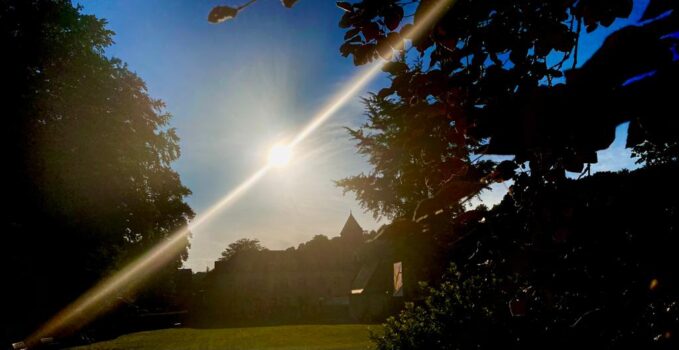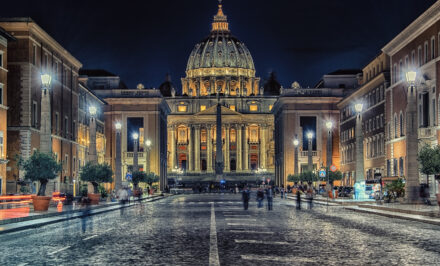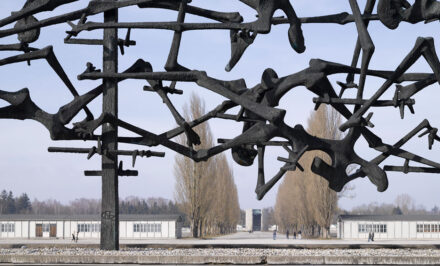Fr. Jaime Vivancos, Spain •
I have been a Schoenstatter since I was 22 years old. At that time, I moved with my family from Valladolid, the city where I was born, to Madrid. Shortly after arriving in Madrid, I joined the student youth who met at the Schoenstatt Center on Calle Serrano, where there was no Shrine at that time. —
Since then, I have had an experience that I can describe without hesitation as wonderful and that has helped me renew my faith to the point of considering and finding my vocation as a Schoenstatt priest.
First as a Schoenstatter and then as a Schoenstatt Father (I was ordained a priest in June 2012), I have experienced with surprise and sadness the recent events surrounding the person of our Founder and Father.
Especially regarding some practices in the context of spiritual accompaniment with him, since some people have found them abusive and have qualified them as spiritual abuse or abuse of authority and in some cases with some sexual content.
The complexity of the situation is that these testimonies mostly come from people who are already deceased, as well as Joseph Kentenich himself. So it is a matter of comparing how people who have died and who have left written testimonies about them experienced events in the past.
So, apart from the psychological or human record of these people, everyone has their own experience of how they experienced these events and what they meant for their lives afterwards.
What does all this mean to me?
In light of all this, and trying to figure out what God’s providence is inviting us to do, I’ve been thinking and praying over the past few months to figure out what this even means for me.
The fact is that lately I have come to some conclusions that have given me peace and that also allow me to continue to trust with faith and enthusiasm in Schoenstatt’s charism, in Joseph Kentenich’s good will, and in the Church, beyond what has happened. For this reason, I have taken the courage to share these reflections in this short article in the hope that it can help us reflect on Schoenstatt’s charism and deepen our understanding.
An integration of spirituality with a pedagogical and psychological approach
The first thing I would like to note is that Kentenich was one of the pioneers who tried to integrate spirituality with modern psychological categories by positively evaluating everything natural, human and especially personal attachments with a very pedagogical approach.
Such integration of spirituality with a pedagogical and psychological approach that respects life processes is increasingly appreciated both in the ecclesial and social spheres. Therefore, Schoenstatt’s charism has a great capacity to transmit and educate the faith in contemporary categories.
However, like any new spiritual path, it must go through a period of maturation, consolidation and purification. In this sense, the whole controversy surrounding the visitation of the community of the Schoenstatt Sisters of Mary, which began in 1949 and ended with Father Kentenich’s exile in Milwaukee between 1952 and 1965, corresponds, in my opinion, precisely to this period of understanding and maturation of a new charism within the Church.
Before this visitation, Schoenstatt was unfolding with all its strength and “youthful” momentum. It is therefore a phase in which limits or one-sidedness can be experienced and revealed, both in application and in development. There, the Church came as an instrument of God to help test, purify and integrate the new charism into the Church.
This is a process that is not without tensions and in which human weaknesses and smallness play a role, but whose ultimate goal is to preserve all the fruitfulness and richness that a new charism brings to the Church and to society.
At this point we enter a crossroads that we do not yet know how it will be resolved, and that is how Kentenich took up this controversy with the Church that lasted almost his entire life. This is the task of the Historical Commission and the researchers, and in my opinion, the sanctity of our Founder is essentially at stake here.
It is very likely that during his time of exile in Milwaukee and with the help of God’s grace, Kentenich gradually became aware of some possible limitations in the pedagogical application of the new charism he founded, especially in the spiritual accompaniment of people with complex or difficult personalities. What we do know is that as time went on, he stopped using some of the practices he used in the early years, such as the child exam.
Personal attachments – an area not without risk
In any case, I believe that all that has happened recently should make us aware of what we must take very seriously, namely, that while we must stand firm on personal attachments, since they are at the heart of our charism, this is an area that is not free of risks, possible errors or misunderstandings, as was the case with our Founder.
In order to better understand what I am referring to, I would like to conclude with a reflection in which I point out some possible limitations in the pedagogical application of our charism that I see today. Schoenstatt has an immensely positive accent in that it values everything natural, especially personal attachments, family character, and everything human.
Therefore, it manages to avoid supernaturalism, that is, a disembodied and unrealistic spirituality that values neither natural attachments nor the human. But the Schoenstatt charism, if neglected, can fall into the opposite, into a certain naturalism that creates personal attachments that are practically closed to God and transcendence.
And more, with a wrong understanding or misapplication of the charism, it can foster unhealthy attachments that lead to long-term dependency relationships or to relationships motivated mainly by the affective inadequacies of the accompanying person, the accompanied person, or both. These kinds of unhealthy attachments are usually not open to God’s grace and create relationships that are so closed in on themselves that they end up forming isolated groups, both from the Church and from the rest of the Schoenstatt Family.
In all of this, I want to encourage you to appreciate and be grateful for the goodness and potential of the charism that our Founder left us, while also being aware of its possible limitations and flaws, so that we can live and apply it in the best possible way.
We also pray for the probable sanctity of Joseph Kentenich, but in any case with the certainty that the truth will make us free. And we must always remember that charisms are gifts that God gives us through the Holy Spirit to help us have an intimate encounter with God through Jesus Christ for a particular time and age.
Photo: Pedro M. Dillinger
Original: Spanish, 05.08.2022. Translation: Maria Fischer @schoenstatt.org














